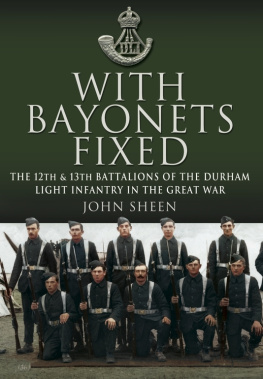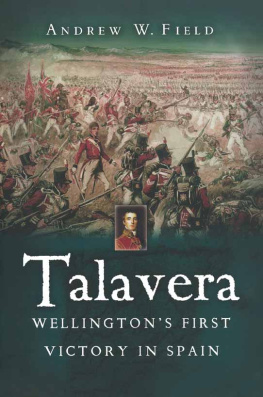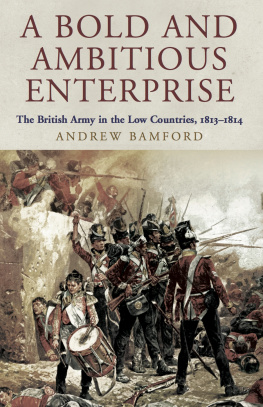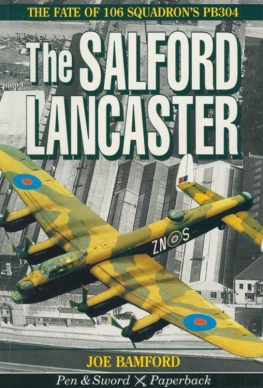The Duke of Wellington has desired Colonel Ponsonby to express to the Regiment his approbation of their appearance this day, His Grace is happy at having again under his Orders a Regiment which was distinguished for its gallantry and discipline, he has no doubt if occasion offer they will continue to deserve his good approbation as on the former and he hopes every Man will feel a pride in endeavouring to support the credit of the Regiment in the latter.
Regimental Orders, 20 April 1815
Gallantry and Discipline
This edition published in 2014 by Frontline Books,
an imprint of Pen & Sword Books Ltd,
47 Church Street, Barnsley, S. Yorkshire, S70 2AS
www.frontline-books.com
Copyright Andrew Bamford, 2014
The right of Andrew Bamford to be identified as the author of this work
has been asserted by him in accordance with the
Copyright, Designs and Patents Act 1988.
ISBN: 978-1-84832-743-6
All rights reserved. No part of this publication may be reproduced, stored in
or introduced into a retrieval system, or transmitted, in any form, or by any
means (electronic, mechanical, photocopying, recording or otherwise)
without the prior written permission of the publisher. Any person who does
any unauthorized act in relation to this publication may be liable
to criminal prosecution and civil claims for damages.
CIP data records for this title are available from the British Library
For more information on our books, please visit
or write to us at the above address.
Printed and bound by CPI Group (UK) Ltd, Croydon CRo 4YY
Typeset in 10.5/14.6 pt Adobe Caslon Pro
In gratitude for the support and assistance provided by the
Regiment, Regimental Trustees and Regimental Museum,
this work is dedicated to all members, serving and retired, of the
9th/12th Royal Lancers (Prince of Waless).
Colour plates
| Plate 1: | Uniform of the 12th Light Dragoons, c. 1794. (Anne S. K. Brown Military Collection) |
| Plate 2: | New Costume of the British Light Dragoons (Anne S. K. Brown Military Collection); 1796-pattern Light Cavalry Sword and scabbard. (9th/12th Royal Lancers Regimental Museum/Richard Tailby) |
| Plate 3: | Sir John Ormsby Vandeleur. (National Portrait Gallery) |
| Plate 4: | Extract from Sir James Steuarts Letterbook, covering part of July 1813. (9th/12th Royal Lancers Regimental Museum/Richard Tailby) |
| Plate 5: | Re-enactment recreation of troopers of the 12th Light Dragoons from the Napoleonic era (Adrian Philpott); Image pasted into the binding of Steuarts Letterbook, showing the ornate design of watering cap worn by the regiment. (9th/12th Royal Lancers Regimental Museum/Richard Tailby) |
| Plate 6: | A surviving example of the Tarleton helmet worn by the 12th Light Dragoons from the 1780s until 1812. (9th/12th Royal Lancers Regimental Museum/Richard Tailby) |
| Plate 7: | Military General Service Medal and Waterloo Medal awarded to Serjeant William Summers of the 12th Light Dragoons (9th/12th Royal Lancers Regimental Museum/Richard Tailby); Firearms of Britains light cavalry: the 1796-pattern pistol, and the Paget Carbine. (9th/12th Royal Lancers Regimental Museum/ Richard Tailby) |
Black and white plates
| Plate 8: | General Sir James Steaurt; Lieutenant Colonel Frederick
Cavendish Ponsonby. (both National Portrait Gallery) |
| Plate 9: | Sword practice (Anne S. K. Brown Military Collection); Dismounted trooper of the 12th Light Dragoons, c. 1801 (Anne S. K. Brown Military Collection); Monument to Cornet Thomas Bateson. (John Rumsby) |
| Plate 10: | Advanced training, from the 1803 Light Horse Drill. |
| Plate 11: | Stapleton Cotton, 1st Viscount Combermere (National Portrait Gallery); Battle of Salamanca, 22 July 1812. (Anne S. K. Brown Military Collection) |
| Plate 12: | British Field Battery and Light Dragoons; View of Bayonne, 12 March 1814. (both Anne S. K. Brown Military Collection) |
| Plate 13: | Henry William Paget, 1st Marquess of anglesey (National Portrait Gallery); Battle of Waterloo: the final British advance. (Anne S. K. Brown Military Collection) |
| Plate 14: | Waterloo, the morning after the battle (Anne S. K. Brown Military Collection); Memorial plaque to the officers and soldiers of the 12th Light Dragoons killed at Waterloo. (D. Timmermans, napoleon-monuments.eu) |
| Plate 15: | Samson Stawell, c. 1835 (National Portrait Gallery); 12th Lancer, c. 1820. (Anne S. K. Brown Military Collection) |
by HRH Prince Andrew, Duke of York
As the 9th/12th Royal Lancers look toward amalgamation in 2015 I welcome this book which keeps alive our interest in earlier campaigns.
For the 12th Light Dragoons (as they were then) the Peninsula and Waterloo represent one of the earliest of many highpoints in their long and illustrious service and it rightly deserves our attention.
Leadership, teamwork and training are the key to sucess in this story and I know from my own service the importance of all three in creating an effective fighting force.
Amalgamation will bring change for the 9th/12th Lancers, but this is not a new challenge, in many ways the challenges will be similar to those faced by the 12th Light Dragoons shortly after these campaigns as they converted to the lance.
This book, as well as providing a wealth of detail about an illustrious period of a soon-to-be shared history, reminds us of the attributes of soldiering that will, I am sure, continue to endure and on which a tradition of loyal and distinguished service is founded.
IN JUNE 1814, WITH THE LONG WARS against Revolutionary and Napoleonic France at last seemingly at a successful conclusion following Napoleons first abdication and consequent exile to Elba, General Sir James Steuart looked forward to the return of peace and the resulting opportunity to restore to good order the regiment of which he was colonel. After three years of distinguished service in the Peninsular War, the 12th, or Prince of Waless, Regiment of Light Dragoons was in need of a spell of home service to refill and remount its ranks. Steuart was only too aware, having held the colonelcy throughout the past two decades of conflict, that this service under Wellington was but the most recent of a series of deployments stretching back into the 1790s, and he therefore sought to obtain the aid of the Quartermaster General at Horse Guards, Major General James Willoughby Gordon, to make sure that the 12th got the respite that they had earned:




















